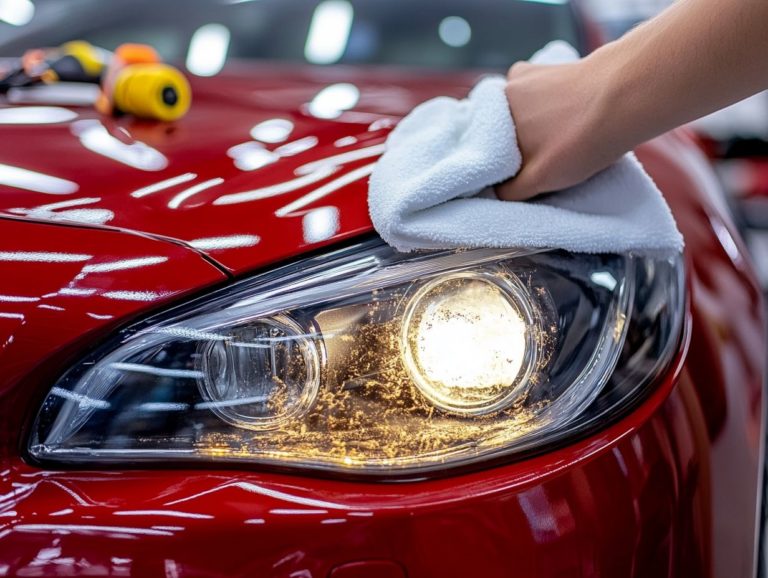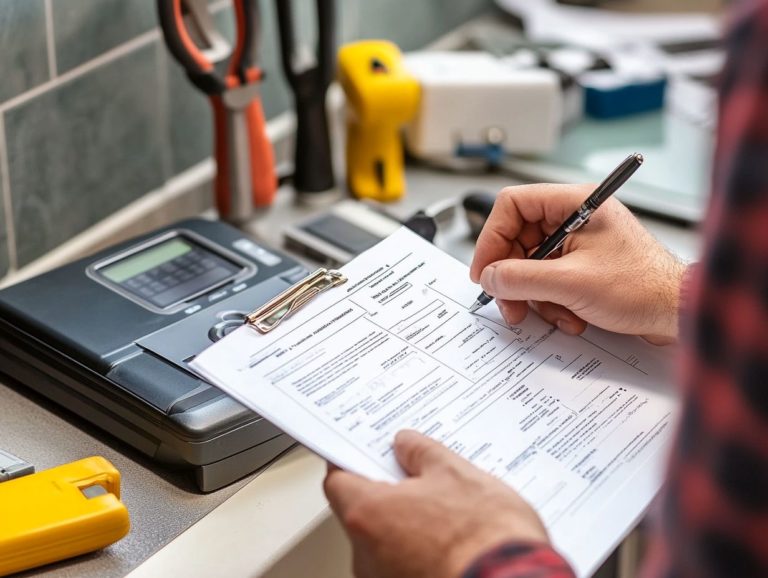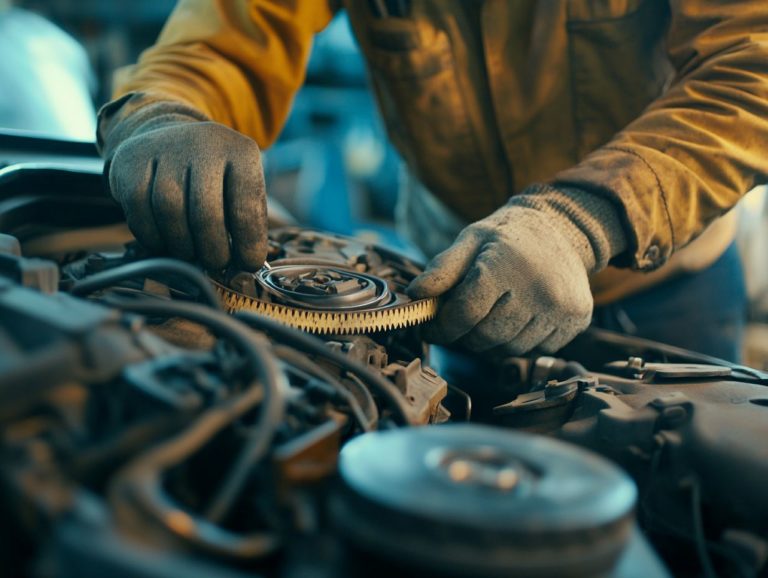How to Properly Inflate Your Tires
Proper tire inflation is essential for ensuring both your safety and the optimal performance of your vehicle.
When your tires have low tire pressure, you risk accidents and decreased fuel efficiency. On the flip side, over-inflation can lead to premature wear and negatively affect your handling.
This guide will equip you with the essential tools for inflation, provide step-by-step instructions to get it right, share best practices for maintaining tire pressure, and highlight common mistakes to steer clear of.
Treat your tires well! Keeping them in great shape is crucial for your safety.
Contents
Key Takeaways:
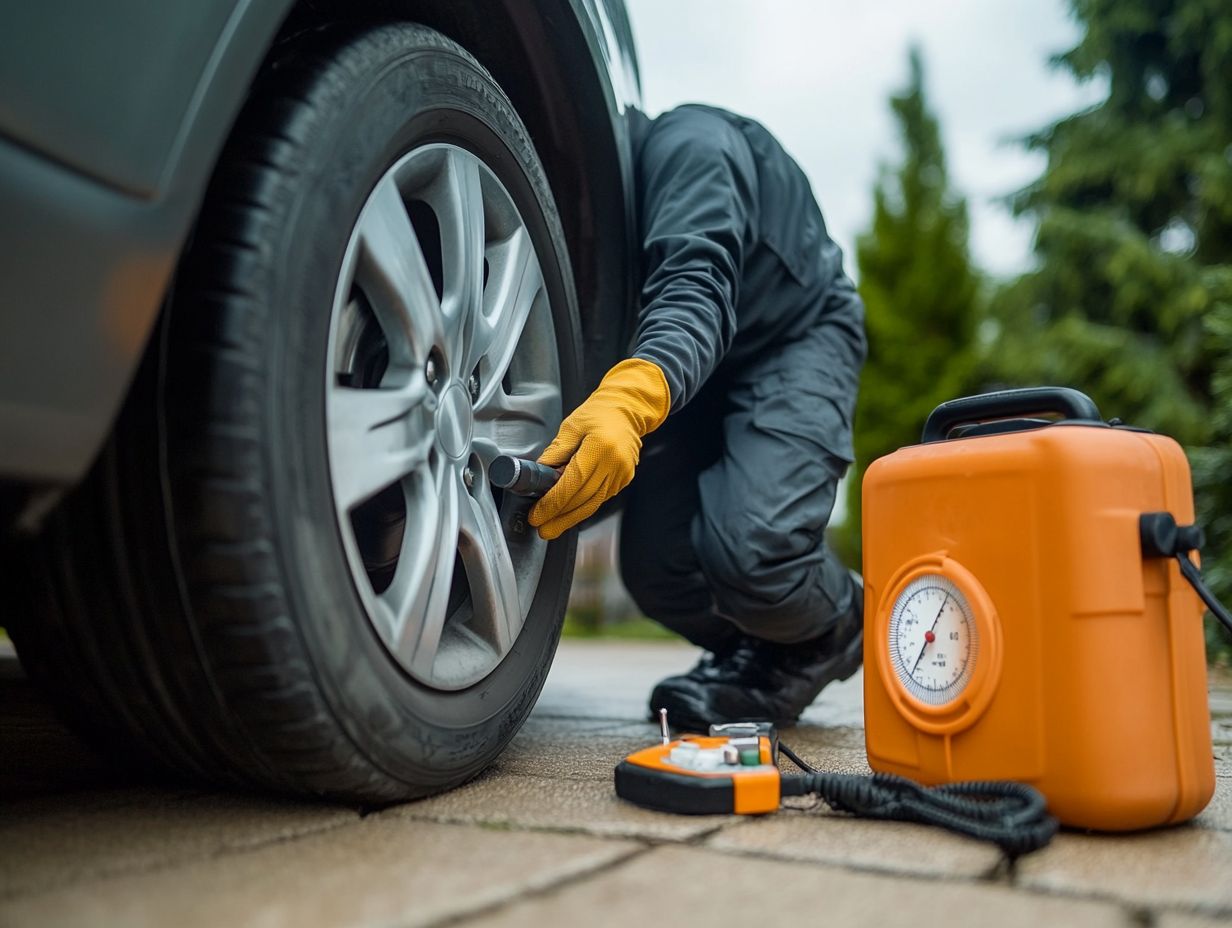
- Proper tire inflation is crucial for safety and optimal performance. Incorrect pressure can lead to accidents and reduce fuel efficiency.
- You will need a tire pressure gauge and an air compressor or pump to properly inflate your tires. Ensure you have the correct equipment before starting.
- Follow the recommended steps for inflating tires, including checking current pressure, removing the valve cap, and filling the tire to the correct pressure level.
The Importance of Proper Tire Inflation
Maintaining proper tire inflation is essential for your vehicle’s safety, driving performance, and tire longevity. The National Highway Traffic Safety Administration (NHTSA) underscores this, warning that underinflated tires can lead to dangerous blowouts, diminished fuel efficiency, and accelerated tire wear, all of which could jeopardize the safety of you and your passengers.
By routinely checking your tire pressure and ensuring it aligns with the recommended PSI (pounds per square inch), you not only enhance your overall driving experience but also significantly boost fuel efficiency and vehicle safety.
Impact on Safety and Performance
The impact of tire inflation on your safety and performance is crucial. Low tire pressure significantly heightens the risk of accidents and compromises your vehicle s handling.
Nearly 80% of tire blowouts happen due to low tire pressure, which can lead to dire consequences on the road. Maintaining properly inflated tires enhances safety and improves fuel efficiency. Studies indicate that keeping your tires at the recommended pressure can improve your gas mileage by up to 3%.
Don t wait! Regularly check your tire pressure to prevent dangerous blowouts and maximize performance.
Regular tire maintenance, including checking tire pressure and ensuring proper alignment, is essential in preventing premature tire wear and maximizing your vehicle’s performance. This diligence allows you to navigate your journeys with increased confidence and safety.
Tools Needed for Inflating Tires
To inflate your tires effectively, equip yourself with the right tools. This includes a dependable air compressor, an accurate tire pressure gauge, and an air pump typically available at gas stations or specialized air filling stations.
Having these essentials ensures that you can maintain optimal tire pressure with ease and precision.
Required Equipment and Supplies
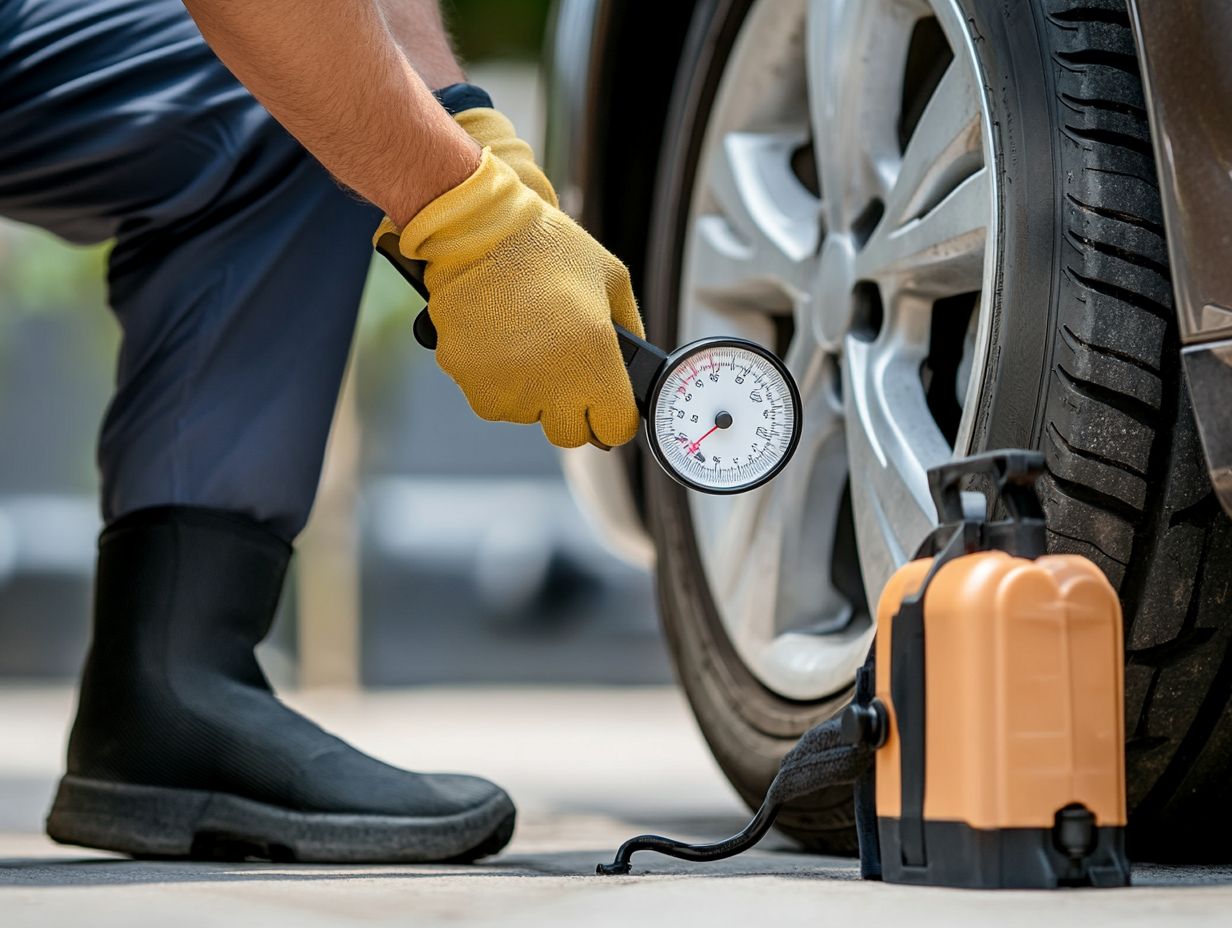
The essential equipment for tire inflation includes a tire pressure gauge, an air compressor, and a tire inflation guide to help you achieve the correct PSI levels. Each of these tools is vital for maintaining optimal tire health.
The tire pressure gauge lets you accurately assess your current tire pressure, which is crucial for ensuring both safety and fuel efficiency. An air compressor quickly inflates your tires to the desired pressure, saving you time and effort compared to using a manual pump.
It’s important to familiarize yourself with the air pump’s operation, making sure it’s set to the recommended PSI as indicated in your vehicle’s manual.
When checking tire pressure, remember to do this when the tires are cold for the most accurate reading. Additionally, regularly inspect your tires for leaks or bulges to help prolong their lifespan.
Steps for Inflating Tires
Properly inflating your tires is essential for maintaining optimal pressure. Start by using a tire pressure gauge to check the current pressure.
Once you have that reading, use an air compressor or pump to fill the tires as needed. Ensure they reach the recommended levels for safe and efficient driving.
Step-by-Step Instructions
To inflate your tires, start by checking the tire pressure with a gauge. Once you ve confirmed the current PSI (pounds per square inch), use an air pump to fill them up until you hit the manufacturer s recommended levels.
This step is crucial! Driving on poorly inflated tires can lead to issues like bad fuel efficiency, quicker tire wear, and reduced handling.
After you ve checked the PSI, locate your air pump, typically found at gas stations or in your garage. Before attaching the pump, ensure the valve stem is free of debris for a smooth connection.
Always refer to your vehicle owner s manual, as the specified pressure may vary depending on load and temperature. If you encounter difficulties while inflating, check for potential leaks in the tire or ensure that the pump is securely attached any air loss can significantly hinder your inflation efforts.
Tips for Maintaining Proper Tire Pressure
Maintaining optimal tire pressure demands consistent attention and a commitment to adhering to tire specifications. Consider utilizing nitrogen for enhanced performance, particularly during colder months, as it can offer benefits that standard air cannot provide.
Regular monitoring of your tire pressure ensures not only safety but also improved vehicle efficiency.
Frequency and Best Practices
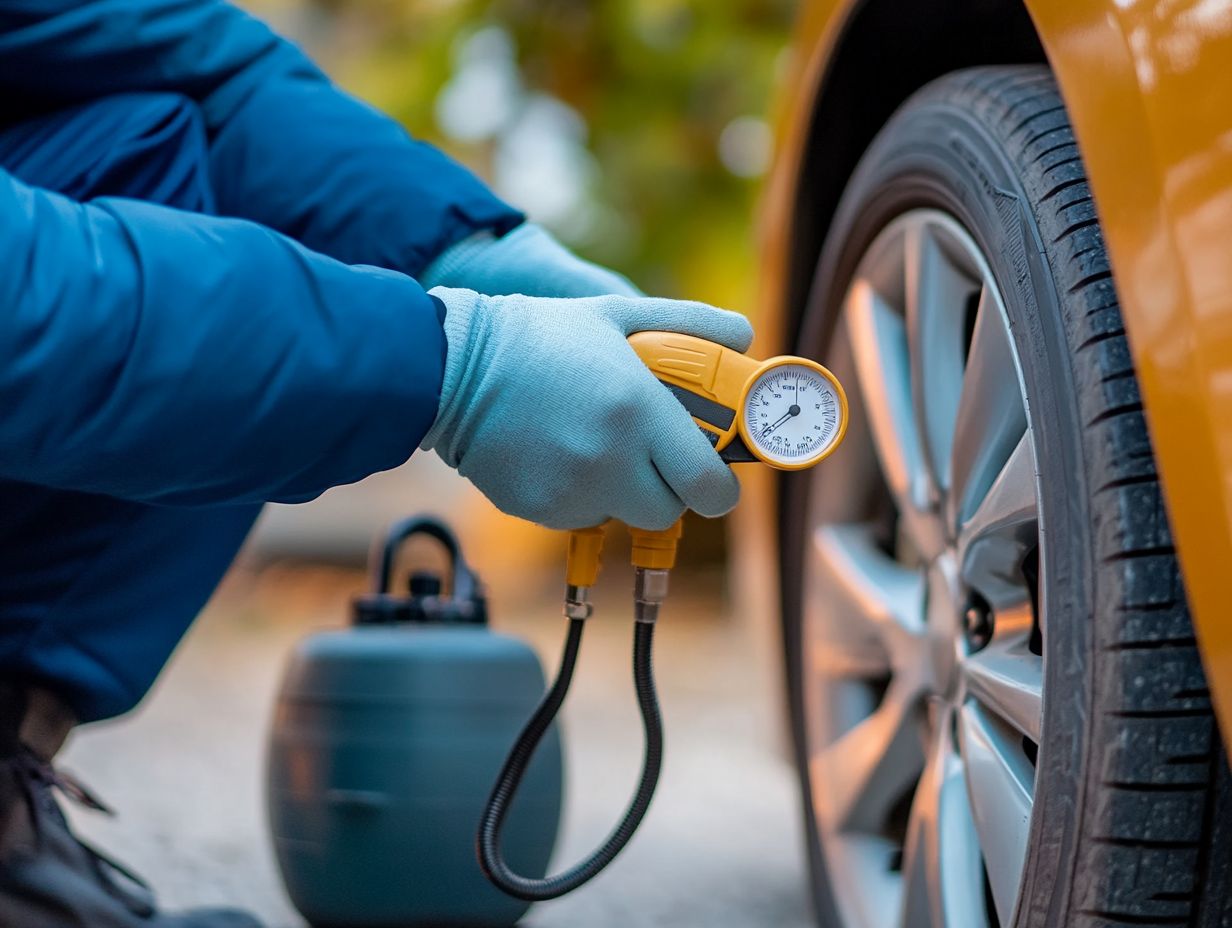
Checking your tire pressure at least once a month and before embarking on long trips is not just a suggestion; it s a best practice. This ensures both the longevity and safety of your tires while preventing unnecessary wear.
Regular inspections are key to maintaining optimal performance. This allows you to accurately assess your vehicle’s handling and fuel efficiency. When it s time to check the PSI, reach for a reliable tire pressure gauge and remember to measure when the tires are cold ideally before you hit the road.
While filling the tires, always adhere to the pressure recommendations found on the driver s side doorjamb or in your owner s manual. Consistently following these guidelines not only boosts your road safety but also extends the lifespan of your tires, making it an essential practice for every conscientious vehicle owner.
Common Mistakes to Avoid
Avoiding common mistakes during tire inflation is essential for your safety and vehicle performance. Errors like overinflation or forgetting to check with a tire pressure gauge can result in underinflated tires, creating potential hazards on the road.
It s important to take the time to ensure your tires are properly inflated. This safeguards not only your vehicle but also your peace of mind.
Errors that Can Affect Tire Inflation
Errors during tire inflation, such as neglecting to securely close the air valve or incorrectly using a valve stem, can significantly compromise both tire safety and performance.
These seemingly minor oversights can lead to serious tire pressure issues. This results in uneven wear, decreased fuel efficiency, and an increased risk of blowouts. Failing to ensure the correct tire pressure can affect your handling and braking, making your vehicle more difficult to control.
When the tire pressure is too high or too low, it not only shortens the lifespan of your tires but also places unnecessary strain on various vehicle components, jeopardizing overall performance.
To avoid these pitfalls, it s crucial to double-check that the air valve is securely closed after inflation and to utilize the valve stem correctly. Regularly monitoring tire pressure with a reliable gauge and adhering to recommended levels will help you maintain optimal vehicle dynamics and safety.
Frequently Asked Questions
Why is Proper Tire Inflation Important?
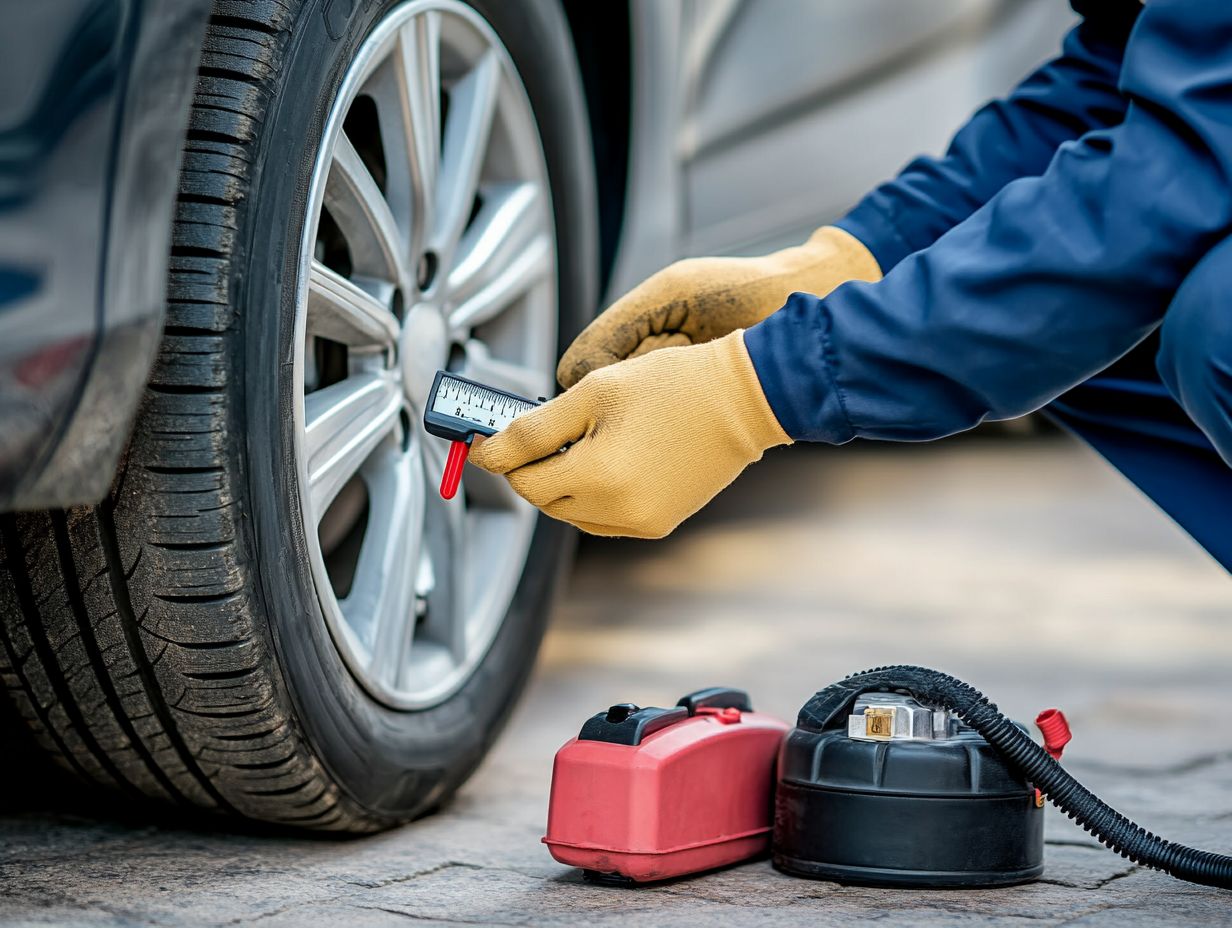
Properly inflated tires save gas and extend tire life. They also ensure safe driving conditions.
How Often Should I Check My Tire Pressure?
Check your tire pressure at least once a month. It s particularly important before long trips.
Can I Use the Tire Pressure on the Sidewall as a Guide?
No, the sidewall pressure indicates the maximum the tire can hold. Always refer to the recommended pressure for your vehicle.
How Do I Know the Correct Tire Pressure for My Vehicle?
The recommended tire pressure is usually on a sticker inside the driver’s side door. You can also find it in your owner’s manual.
What Happens If I Over-Inflate My Tires?
Over-inflating can lead to uneven tread wear and reduced traction. It may even cause tire blowouts.
Is It Okay to Use a Gas Station Air Pump to Inflate My Tires?
Yes, gas station air pumps are fine to use. Just remember to check the pressure and adjust it as needed.


